BRANDED CONTENT
Gaining an advantage: How digital tech powers team to complete Changi Airport T2 project more efficiently
Built environment specialists tap virtual 3D models and traffic flow simulations to make quick, informed decisions, saving time and resources on terminal expansion
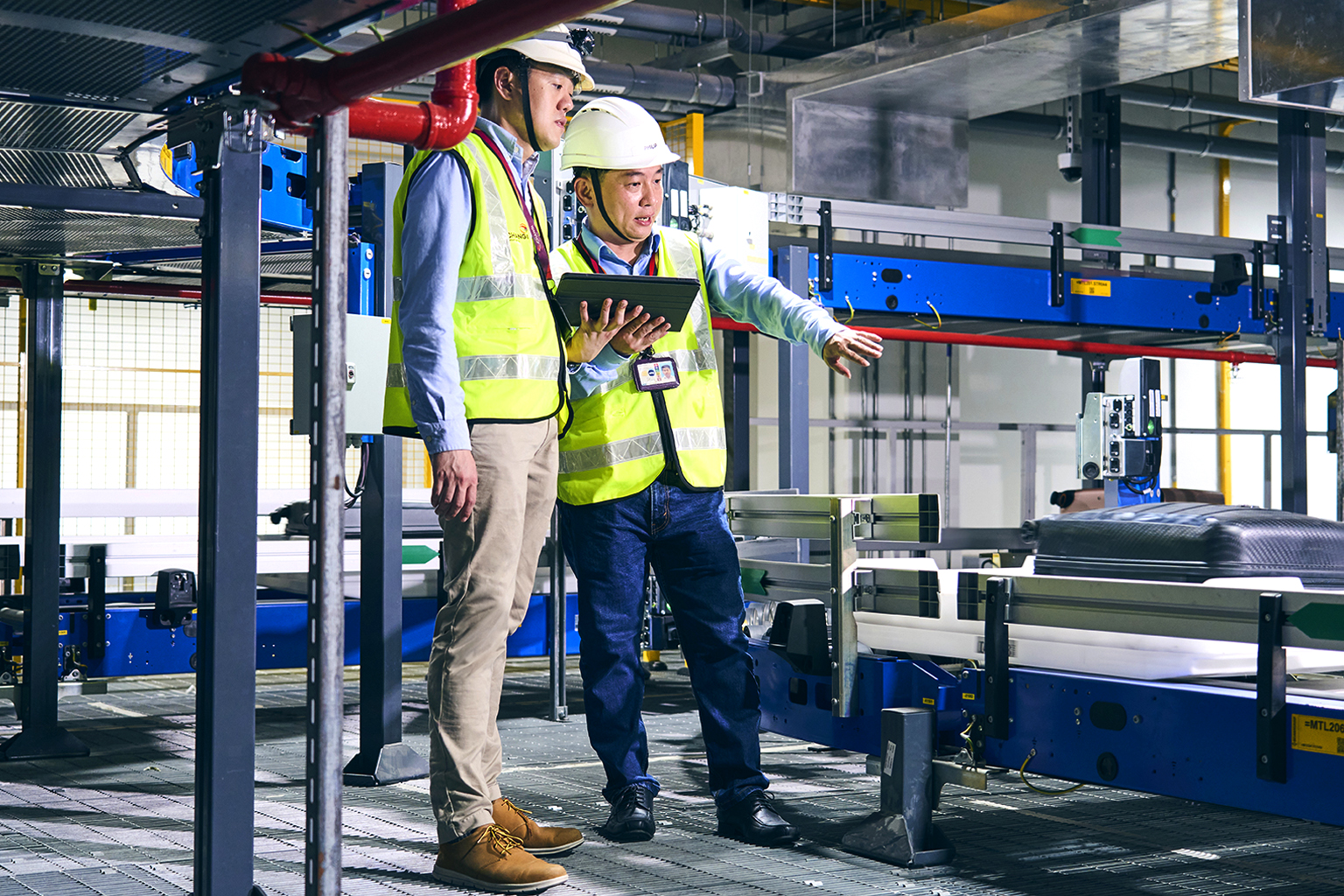
Mr Philip Su (right), project director of Changi Airport’s Terminal 2 expansion project, worked closely with baggage handling system senior manager Lim Hon Wei to ensure that passengers’ check-in luggage is seamlessly processed and transported.
PHOTO: SPH MEDIA
Follow topic:
When Mr Philip Su walks around Changi Airport’s Terminal 2 (T2), he never fails to beam with pride. After all, the project director of the recently completed T2 expansion project by Changi Airport Group (CAG) spent the past five years overseeing the upgrading and refurbishment works.
“Seeing the happy smiles of our passengers passing through T2 fills me with immense pride and a profound sense of privilege to be part of the Changi team,” says the 49-year-old.
The revamped terminal is now capable of handling 28 million passengers a year, up from the original capacity of 23 million. It features more automated check-in kiosks and self-service bag-drop machines, automated immigration lanes, gardens, play areas, as well as shopping zones.
Learn what it takes to expand an existing terminal at Singapore’s Changi Airport.
As Singapore prepares for more passengers and visitors at its airport terminals – including through the construction of a fifth terminal and upgrading of existing facilities – CAG is using an array of advanced construction technologies to minimise the impact of its works on airlines, passengers and airport visitors, with the aim of boosting user experience and staff productivity.
For example, by first using Building Information Modelling (BIM) to create and coordinate virtual 3D models of their work, consultants and contractors could layer their designs to precisely visualise and identify any potential spatial clashes between building components before the T2 expansion works started. They could also track construction works and communicate the progress to CAG’s airport operations team in a visual, simple-to-understand way.
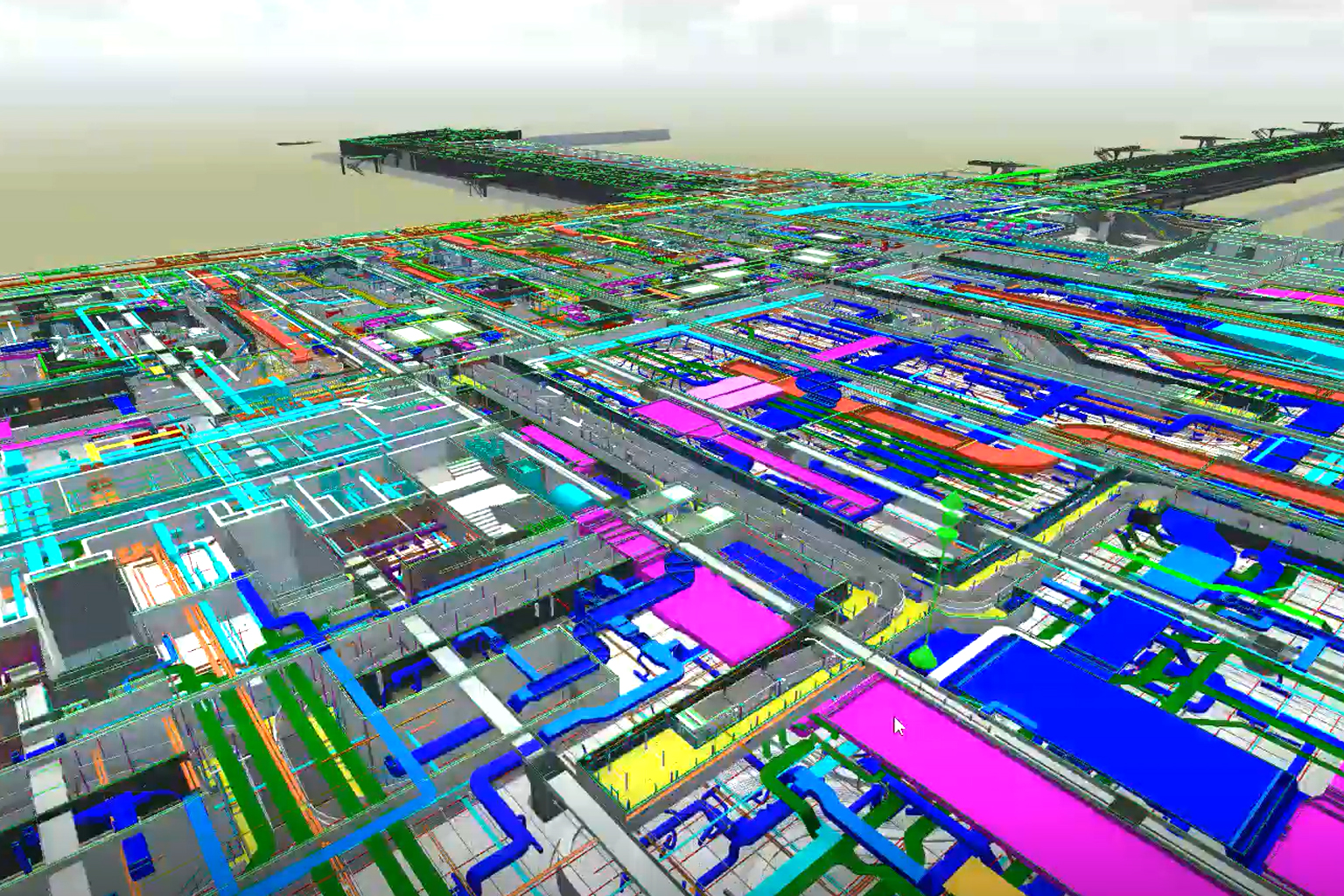
Mr Su's key responsibilities for the T2 project included managing the scope, cost and time taken, supervising the project's progress, and working closely with contractors to address any challenges that arose.
He says: “Being able to visualise potential spatial clashes using the BIM software gave us clarity to make better decisions quickly.”
Through the use of digital tools like BIM, the project team fostered collaboration, enhanced efficiency and minimised abortive works downstream.
This approach is in line with the Building and Construction Authority’s (BCA) Built Environment Industry Transformation Map, comprising frameworks to improve the sector via innovative methods and technologies.
Integrated digital delivery (IDD), which is the use of digital tools to integrate work processes and connect stakeholders across the construction value chain, is one such method. This facilitates better planning and data exchange from the onset to optimise building designs and construction.
The T2 expansion project, which kicked off in January 2020, was completed last November ahead of schedule. This was an achievement, considering the disruption to materials supply and manpower due to border closures and manpower limitations during the Covid-19 pandemic.
Kick-starting your digitalisation journey
Integrated digital delivery (IDD) manages the entire life cycle of a built asset – from design and construction, to operation and maintenance – using interconnected digital solutions, which help companies boost productivity and optimise performance.
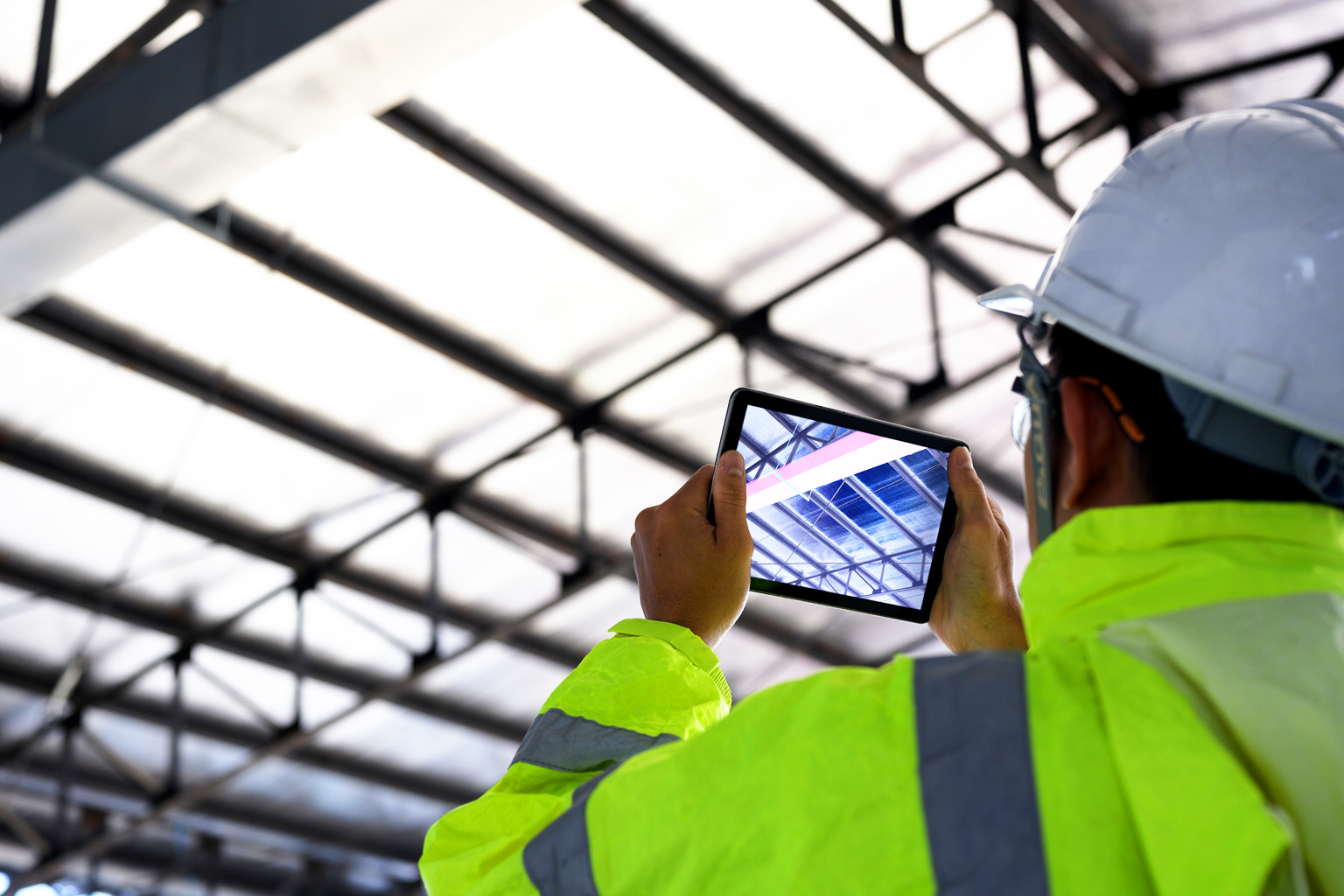
Consider these four key IDD areas as you embark on your digitalisation journey:
Digital design
Involve all stakeholders early to optimise building design for construction and maintenance.
Benefits: Minimises redundancy and rework, saving time and resources.
Involve all stakeholders early to optimise building design for construction and maintenance.
Benefits: Minimises redundancy and rework, saving time and resources.
Digital fabrication
Derive component specifications from a project’s digital design and prefabricate components off-site in a controlled factory environment before on-site assembly.
Benefits: Reduces human errors, saves time, and cuts labour costs with factory automation.
Derive component specifications from a project’s digital design and prefabricate components off-site in a controlled factory environment before on-site assembly.
Benefits: Reduces human errors, saves time, and cuts labour costs with factory automation.
Digital construction
Use technology to monitor activities and adopt just-in-time inventory management.
Benefits: Lowers on-site inventory costs and frees up capital tied up in unused inventory.
Use technology to monitor activities and adopt just-in-time inventory management.
Benefits: Lowers on-site inventory costs and frees up capital tied up in unused inventory.
Digital asset delivery and management
Use technology to monitor operations and maintenance work in real time.
Benefits: Helps to enhance asset value.
Use technology to monitor operations and maintenance work in real time.
Benefits: Helps to enhance asset value.
Companies in Singapore can tap the Productivity Innovation Project (PIP) incentive scheme for financial support to adopt IDD in their projects.
Laying the groundwork digitally
For T2’s expansion works, additional preparation work was necessary before BIM could be fully integrated into the planning and construction works. As the terminal was built in 1990, there was no digital model of it.
To create a detailed base model of T2’s infrastructure required for the BIM software, CAG’s Drawing Management Office, which manages as-built drawings upon the completion of projects and updates existing ones, commissioned a full point cloud scan of the terminal in 2017.
During each scan, a 3D laser scanner mounted on a tripod captures a 360-degree view of its surroundings. Each process lasts less than two minutes. Over the course of a year, CAG conducted extensive scans across the whole terminal, including mechanical and electrical (M&E) systems hidden within the ceiling space, to build a digital map of it.
With 3D scanning, precise spatial data was captured, ensuring that the structural and architectural details of the terminal were accurately documented. This point cloud data repository served as the foundation for developing a highly detailed and reliable digital BIM model.
The scanned data was then imported into a BIM system so that designers, engineers and contractors could overlay their plans for the terminal and manipulate the virtual model in other ways.
Ms Esther Ang, senior manager in charge of CAG’s Drawing Management Office, which develops, stores and handles the airport's engineering drawings, explains: “The point cloud model is like what you see in Google Earth. You can look around but it’s still just photography. You can’t do things like add objects. For that, you need BIM."

Meanwhile, CAG’s senior manager of airport master planning Zhang Miao reached out to internal departments and external stakeholders, such as airlines, to gather critical information. This included projected flight schedules, as well as historical data on when passengers would typically show up during check-in periods and how many people would come to see them off.
With this data, her team used airport planning simulation software to visualise expected peak-period traffic flows at key passenger touchpoints and recommended ways to prevent delays and bottlenecks.
Ms Zhang, a trained civil engineer, says: “The simulations will show us if the planned provision of facilities is enough, or if we need to add more facilities such as check-in counters or immigration lanes in tandem with projected traffic demand, or make other operational changes to meet Changi’s high service standards.
“By running multiple simulation scenarios, we can be confident in the terminal’s ability to cater to its estimated passenger traffic in the future.”
The 37-year-old, whose team focuses on terminal capacity planning, adds that the meticulous studies are vital for the terminal’s long-term health and viability. She explains: “There are many competing needs for space in any terminal, including for operations, engineering and commercial interests.
“We need to find the right balance so that there’s enough space for the engineers to carry out maintenance in future, the operations team to ensure a first-rate experience for travellers, and our tenants to attract shoppers, just to give a few examples. A lot of deliberation goes into weighing each possibility for use of space, and the simulations help us to ensure that we achieve the optimal balance. It is also important to remain nimble in our designs as future needs may evolve.”
Such BIM preparation and simulation studies also enable designers and contractors to fully harness IDD, allowing for better planning from the start, optimised designs for construction and maintenance, and easier monitoring of progress during implementation.
Mock-ups to aid manufacturing
By creating life-size models of new airport features in advance, the team was able to find and fix kinks before manufacturing began, saving time and resources.
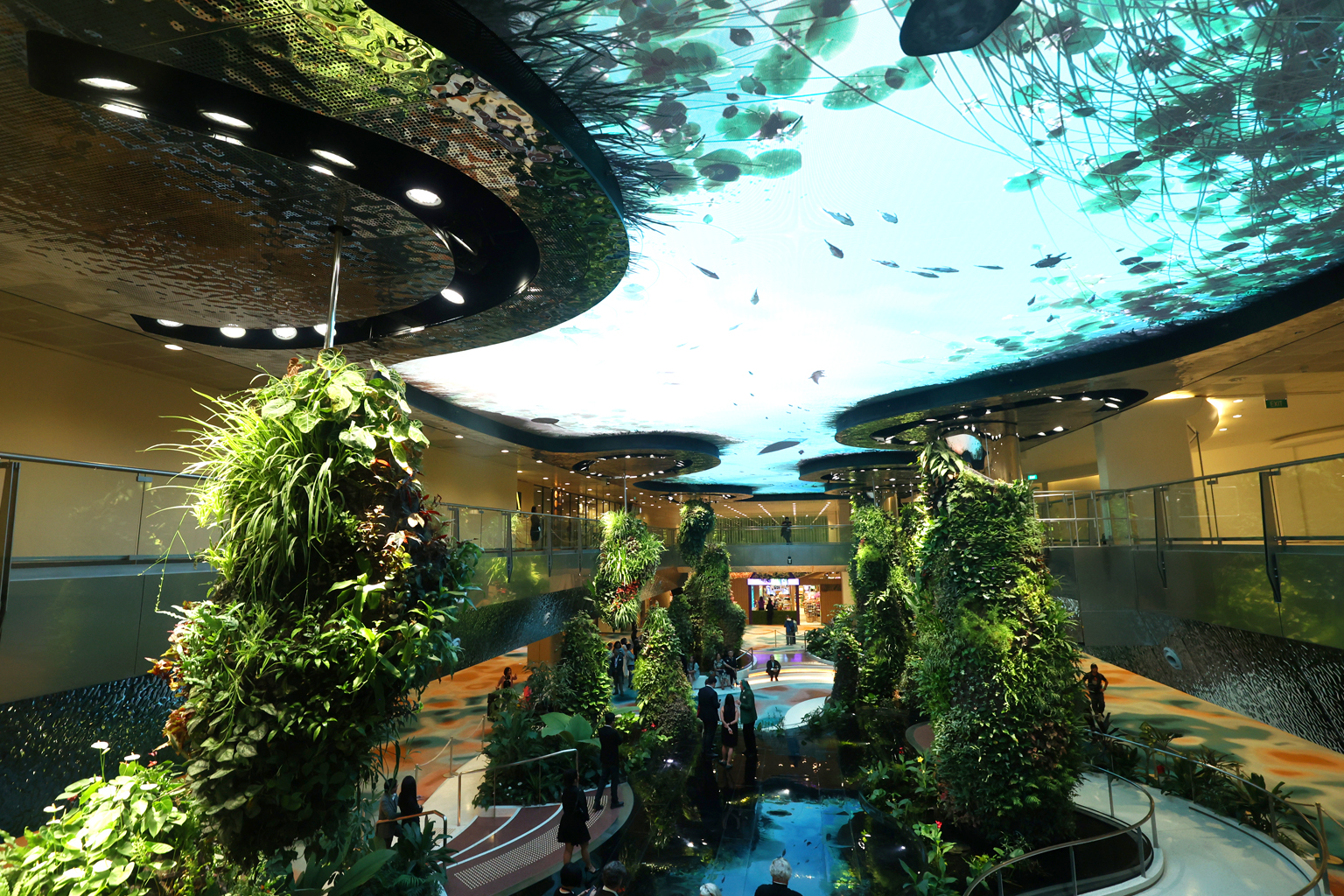
Changi Airport Group (CAG) and its contractors not only used digital tools, but also built smaller-scale study models for the Terminal 2 (T2) expansion project.
Shares CAG project director Philip Su: "Anything we were not sure or wanted to know more about, we built mock-ups.”
This approach resolved design issues early on, particularly for the complex curves of the new departure hall ceiling. The mock-ups highlighted manufacturing difficulties, leading to design adjustments.
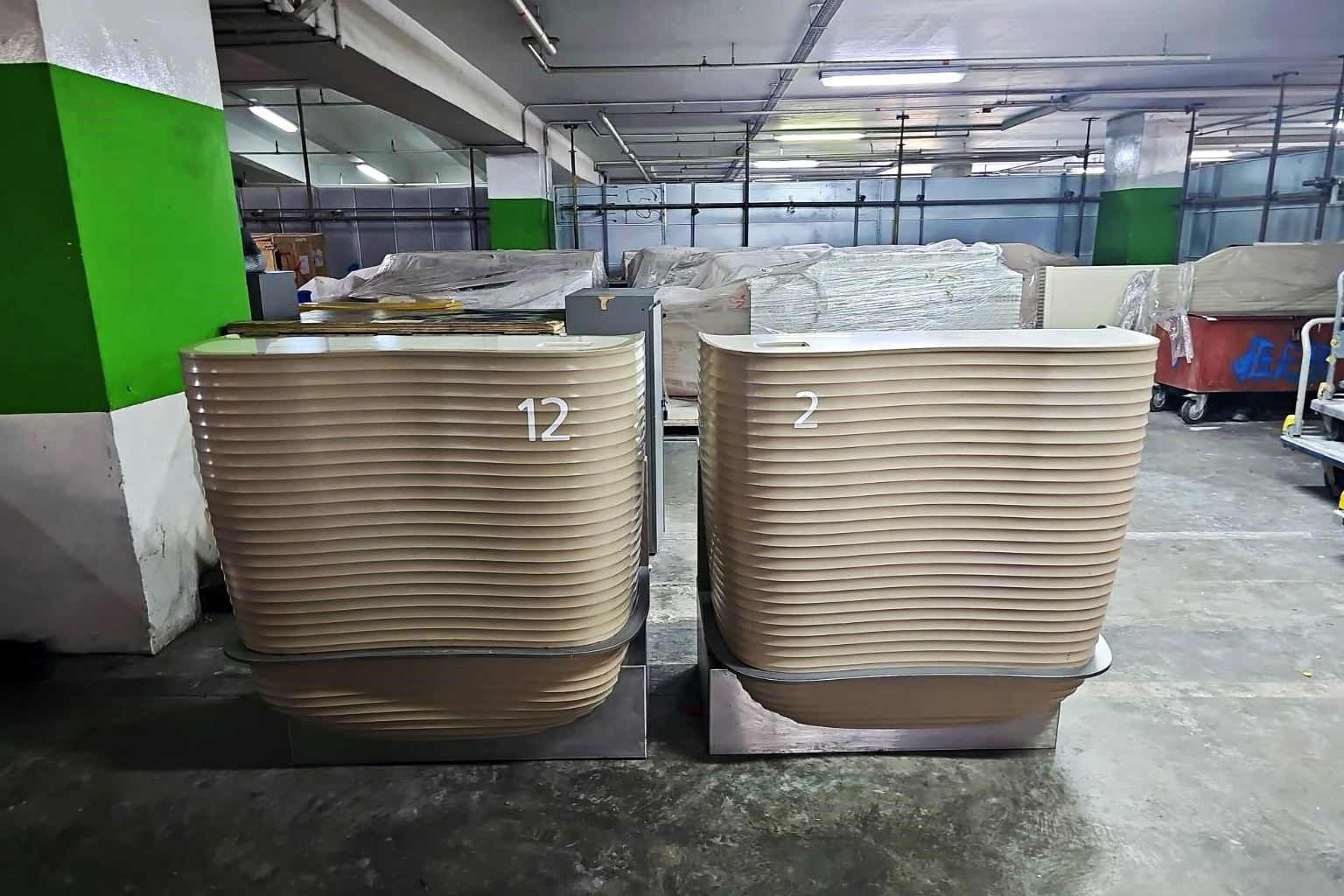
The team used mock-ups of check-in counters to ensure there would be adequate space for the ground handling equipment used by airport partners.
“We even repeatedly rammed a trolley against the metal trolley stopper plate at the bottom of the counter, to make sure that it could withstand such sustained impact and not crack over time,” says Mr Su. These mock-ups helped minimise downstream problems.
“Sometimes you don’t encounter an issue until you see and feel the actual thing. You don’t want to have to adjust designs during fabrication, regret not incorporating certain user-friendly features, or tear out completed features and redo them. If you want to have a smoother manufacturing and construction process, models are the way to go.”
Designing the baggage handling system
A critical part of the T2 expansion project was overhauling the terminal’s baggage handling system to raise its capacity and fully automate it. Mr Su adds: “You can build the best terminal, but if you don’t have a good baggage handling system, the passenger experience would be affected.”
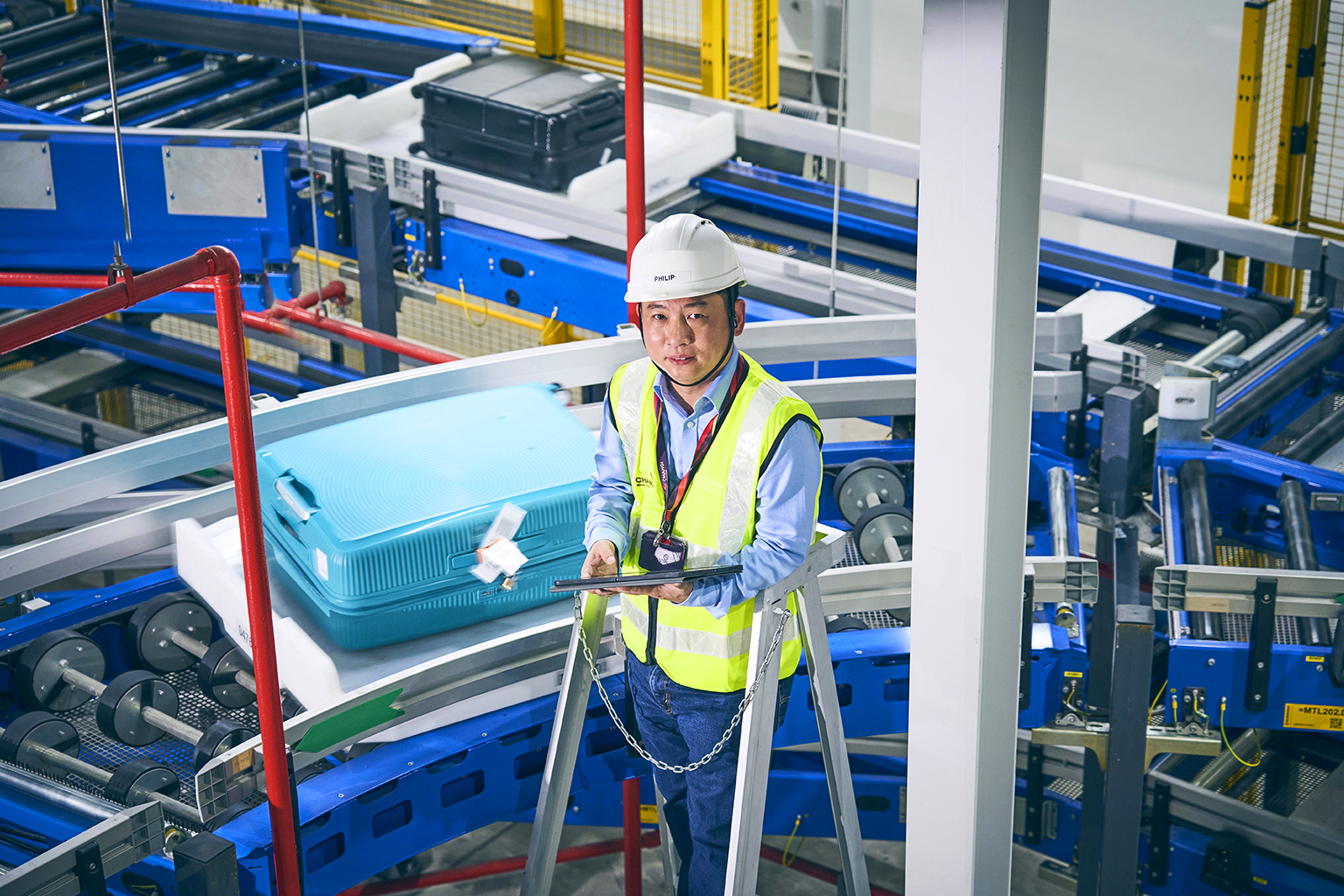
With this given priority, the new baggage system’s design was the first to be overlaid on the BIM model to identify potential spatial clashes. “That enabled us to determine which of the existing building services had to be moved, and where they could be shifted to. From there, we brought in the designs for the new T2 M&E services and structural works, and then the architectural works and finishes, such as the ceiling, to deconflict layer by layer.”
With the BIM software identifying clashes that can be visualised in 3D and alerting designers to conflicting services and works at each stage, the project team could resolve the issues digitally before moving on to construction, averting costly and time-consuming complications on-site.
“This was especially important for the T2 expansion project because we were working within the highly constrained operating environment within the terminal. Any error could have significant repercussions on airport operations and impact the project’s progress.” says Mr Su.
By planning the schedule of works in the BIM system, the project team and its contractors also had a visual way to show the airport’s operations team when and how different parts of T2 would be affected by the construction and hoarding. “With the 3D model, it’s easy even for laymen to see and understand what is the issue and what is going to be done.”
He adds: “We were able to revamp the baggage handling system while the terminal was operational, without causing any disruptions to passengers. They didn't even know anything was happening.”
Smarter, quicker way to monitor progress together
As construction got under way, the BIM software provided an efficient means to monitor the work progress. During their respective site walks, construction managers, quality assurance and quality control teams, as well as Mr Su himself, could compare the 3D models of the planned works to the headway made on-site to spot any delays or deviations.
He says: “If you see on the BIM model that there are supposed to be 30 columns completed by then, but you count only 15 columns, you know you are in trouble. Previously, you needed to have experienced personnel to make sense of the master programme, which has thousands of line items. The BIM software’s pictorial format is much more user-friendly for tracking.”
Although the expansion work was split among six construction teams, all of them recorded their progress on a single BIM platform, giving Mr Su and his team a convenient overview of the entire project. “We could see when any part was facing difficulties, find out why and assist. We could also identify any worrisome trends and interfacing challenges, and step in to nip them in the bud.”
To Mr Su, digital tools like BIM have the power to revolutionise Singapore’s built environment sector by paving the way for enhanced collaboration, efficiency and sustainability. He says: “By harnessing BIM, we can unlock new possibilities to streamline construction processes, optimise resources during construction projects, and make smarter decisions throughout a project’s life cycle.”
Ways to enhance your professional skills
For those looking at a career in the built environment or hoping to upgrade their qualifications in Building Information Modelling and design, there are certifications and courses available.
Specialist Diploma:
Mid-careerist:
Industry Professionals:
Building Singapore is a five-part series featuring the people behind the nation's built environment sector who are transforming the urban landscape. Get an inside look at how they are creating more liveable, sustainable and vibrant spaces for Singaporeans to live, work and play in. This feature is the third in the series.


